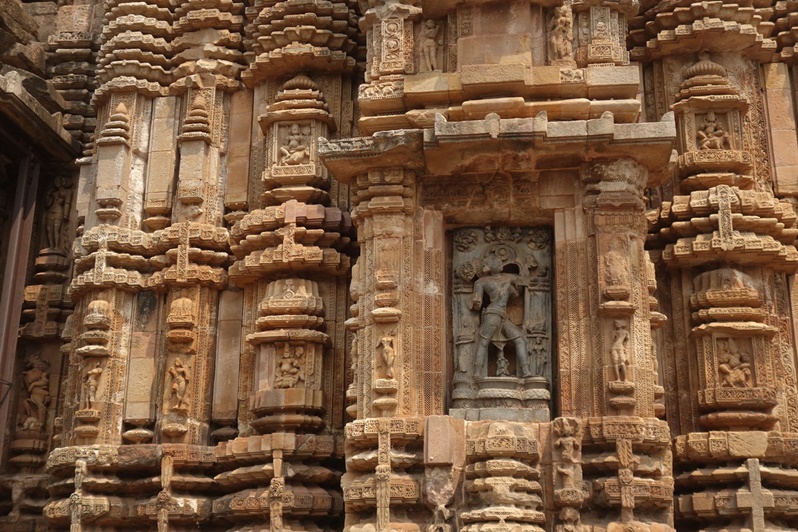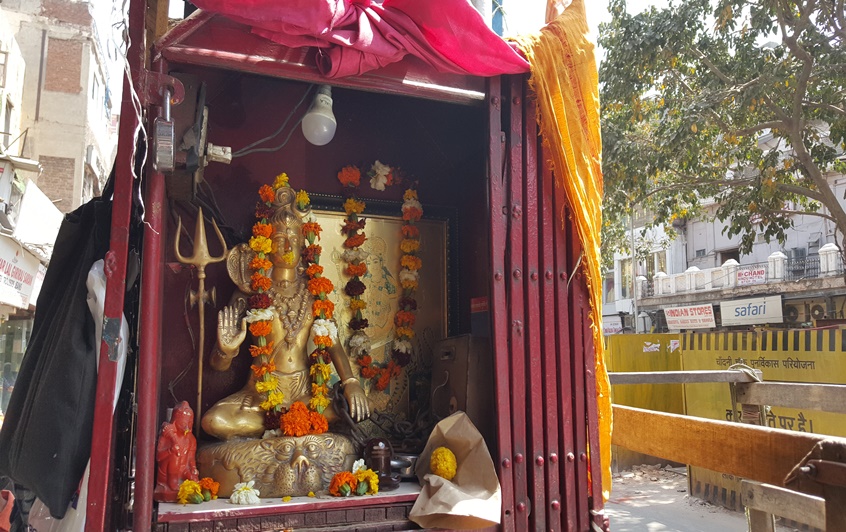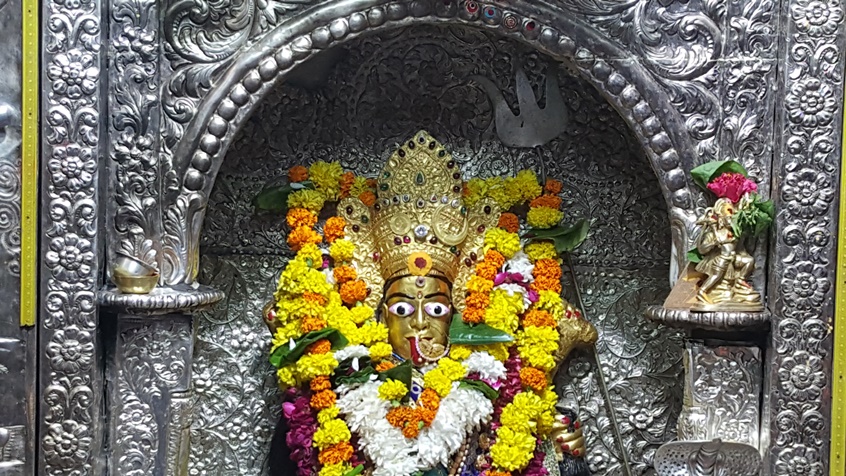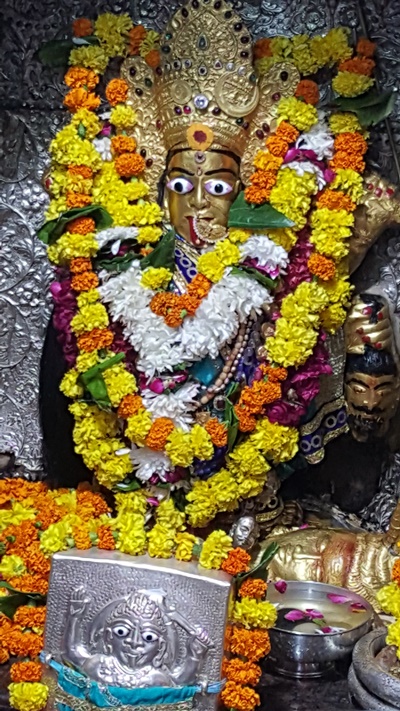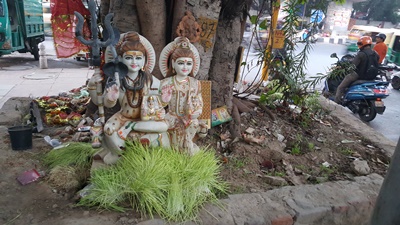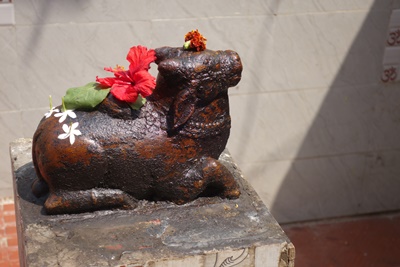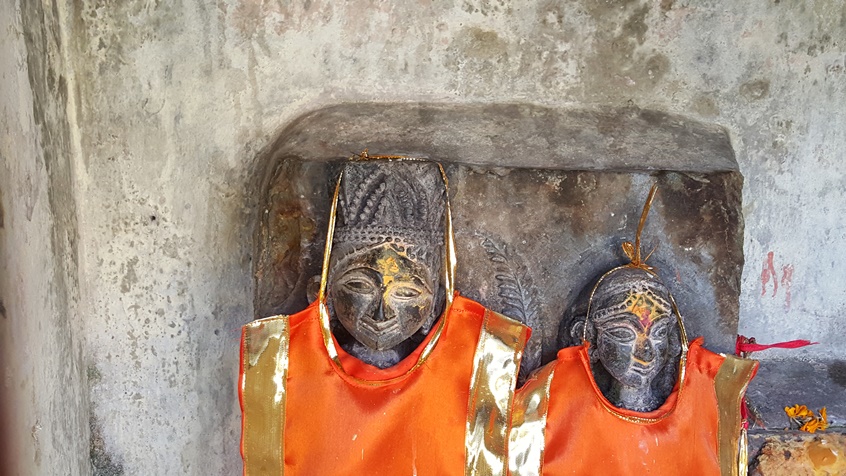
par Bertrand Bellaize, le 20 mars 2020
La consécration d'une statue dans l'hindouisme en Inde
En Inde, mais aussi chez les Bouddhistes, une statue ou une image sacrée (murti) avant d’être vénérée est consacrée : la consécration d’une statue a pour but de lui donner vie : elle n’est plus seulement une forme représentant une divinité mais elle devient son canal d’expression, elle est animée par sa présence, sa force : elle peut alors symboliser les qualités de la divinité, le principe pour lequel elle est honorée : Shiva en tant que yogi, par exemple, qui est adoré par les Sannyasin (les renonçants qui ayant rompu tous les liens avec leur famille, leur caste... consacrent leur existence à la seule recherche de l’absolu), Durga en tant que puissante force destructrice des entraves, Ganesh qui lève les obstacles. Il est important de comprendre qu’il ne s’agit pas d’honorer une idole mais bien le divin, la pure conscience : la représentation permettant de mettre en forme, de symboliser des forces en œuvre spécifiquement.
La consécration se fait aussi bien lors de l’inauguration d’un temple que pour l’installation d’une nouvelle statue dans un temple ou dans un sanctuaire privé (autel dans sa maison par exemple).
La consécration d'une statue comprend de nombreuses étapes
Tout d'abord, les brahmanes par la consultation de textes sacrés et l’étude astrologique vont déterminer la date la plus propice pour la consécration.
Le processus comprend de nombreuses étapes : dans un premier temps, la statue sera purifiée, elle passe plusieurs jours dans de l’eau (généralement trois), puis elle sera enfouie dans des grains de blé ou de riz et recouverte de fleurs.
Les éléments qui ont eu contact avec la statue ne sont en aucun cas jetés : l’eau est versée au pied d’un arbre, les céréales cuites et distribuées aux renforçants, mendiants…
La cérémonie d’installation d'une sculpture
Puis vient le temps de la cérémonie d’installation : en fonction de l’endroit, de la nature de la consécration, la statue peut être menée en procession dans le village, dans les rues proches du temple en ville… couchée, recouverte de fleurs dans un palanquin porté à dos d’hommes et accompagnée par les musiciens et les chants.
Puis à l’intérieur du temple, des cérémonies vont parachever cette consécration : des offrandes de nourritures (fruits, fleurs, épices…), des pujas, des chants… en l’honneur de la divinité. Cette cérémonie s’étale sur plusieurs jours : le dernier jour est vraiment le moment ou la statue devient l’icône du divin : le bandeau qui couvrait les yeux est ôté et il est procédé à la cérémonie « de l’ouverture des yeux » qui est différente suivant les traditions : cela peut être réalisé avec des feuilles de Tulsi, de basilic, une aiguille d’or….
Le souffle de la vie
Le choix de l’emplacement est aussi primordial, surtout dans une maison : là aussi, cet endroit va être consacré avec du parfum, un yantra (symbole géométrique)…
Avant d’être définitivement installée, la statue portée, fait trois fois le tour du temple accompagné par les chants des fidèles : puis elle est scellée, le prêtre dépose des mantras aux endroits symboliques : sur les pieds, le nombril, la tête, trace avec de la poudre vermillon des symboles sacrés sur le cœur et le socle et enfin asperge la statue avec de l’eau du Gange. L’eau du pot qui servait à invoquer le dieu est alors versé sur la statue, le brahmane récite des mantras, souffle sur la statue lui "insufflant" ainsi la vie, le prâna.
Particularités de la consécration d'une statue bouddhiste
Chez les Bouddhistes, la cérémonie est différente et l’une des particularités de la consécration est le remplissage de la statue d’ »objets » qui seront scellés dans la statue : ces objets peut être de différentes natures, cela peut être des textes sacrés, des reliques d’un sage (cheveux, ongles, os, dents) ou alors des biens qui lui ont appartenus et avec lesquels il a été en contact proche. Cela peut aussi être des images sacrées, des modelages en argile, des plantes médicinales : le choix de ses objets se fait en fonction de la statue, de la divinité représentée, de la situation et sera adaptée au cas par cas. Il est à noter qu’une statue peut être consacrée plusieurs fois en fonction, justement de la nécessité.
Murtis ou sculptures nées d’elle même
Il est une situation où l’image divine n’est pas consacrée, c’est lorsque celle ci est née d’elle même « Svayambhu » : ces représentations ou statues divines n’ont pas été créées par l’homme mais lui sont révélées et sont apparues spontanément : souvent grâce à des rêves, à un animal (bien souvent une vache dont le lait coule à l’endroit où est enfouie l’image divine) : c’est le cas la pierre Salagrana, forme naturelle de Vishnou issue de la rivière Gandki au Népal ou les temples de Naina Devi...
Tous ce qui a été offert aux dieux ne peut être jeté dans un endroit impur : les offrandes sont distribuées et les images sacrées, lorsqu'elles sont renouvelées, retournent à la nature, la plupart du temps dans l’eau de l’océan, d’une rivière...
